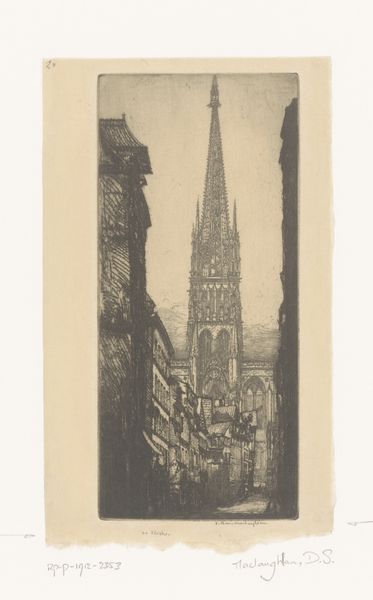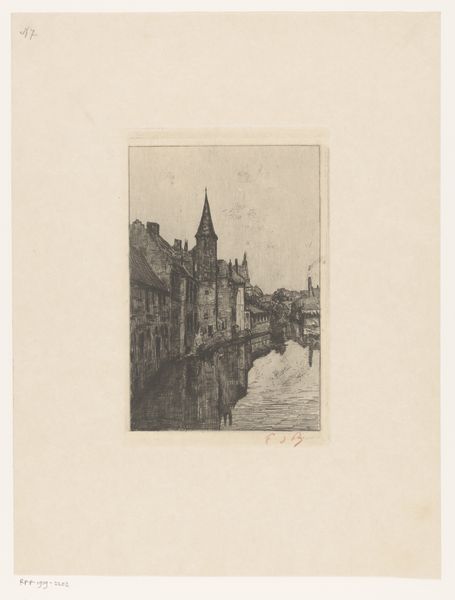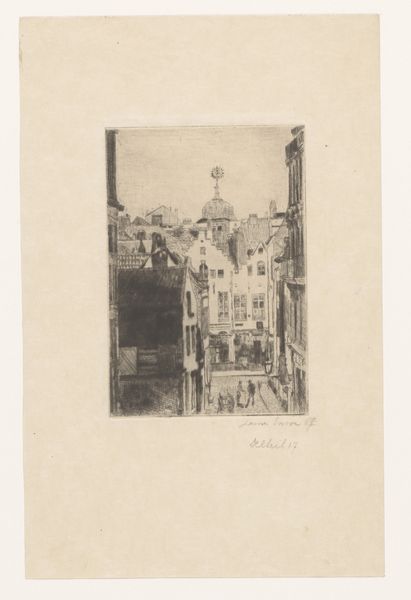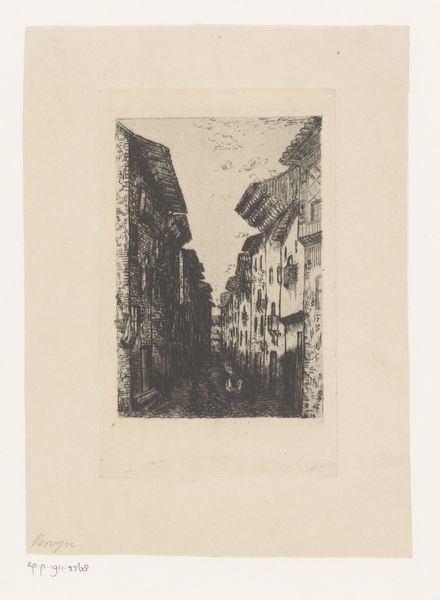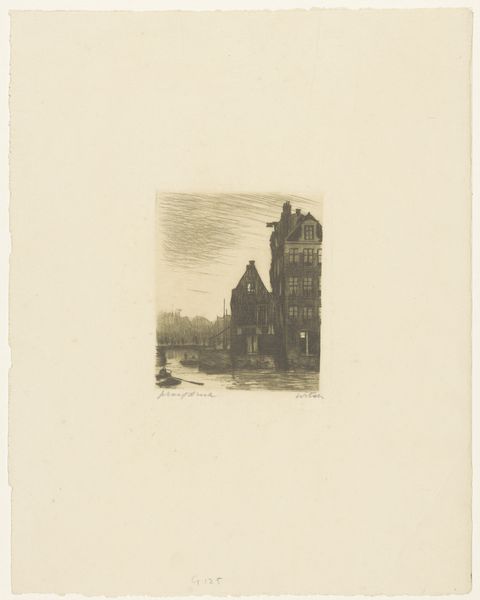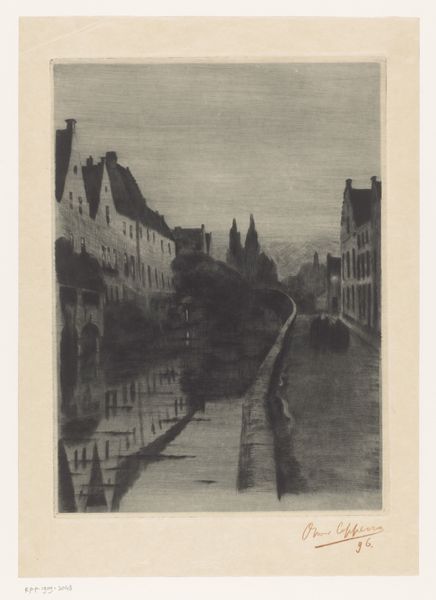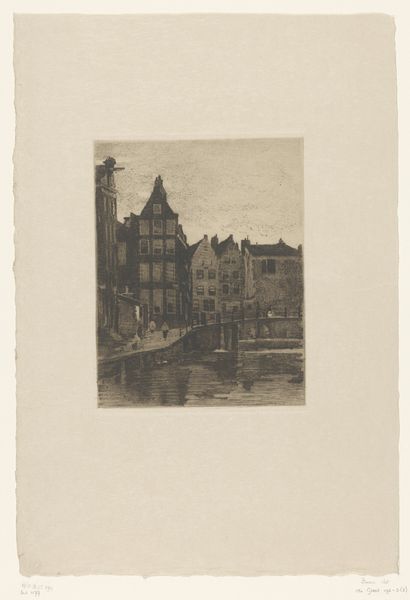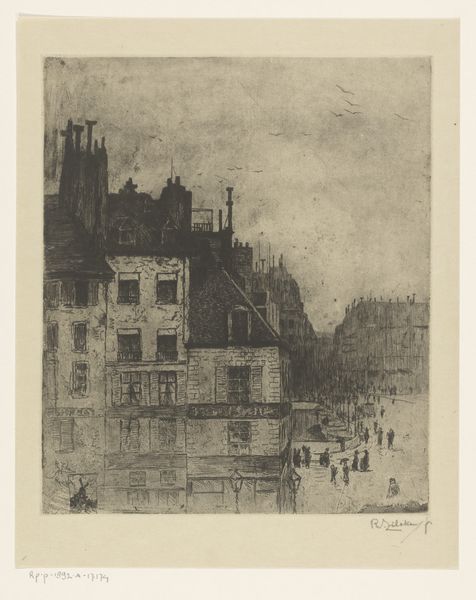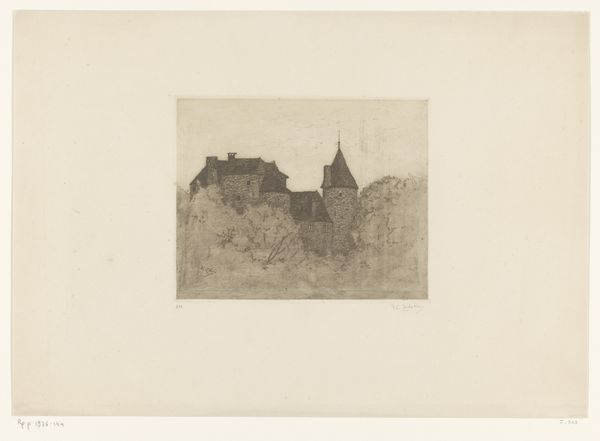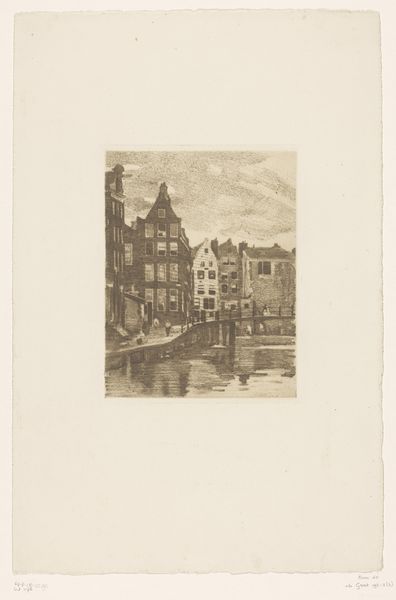
tempera, print, etching
#
art-nouveau
#
tempera
# print
#
etching
#
cityscape
Dimensions: height 347 mm, width 250 mm
Copyright: Rijks Museum: Open Domain
Editor: This print, "Gezicht op de Stephansdom te Wenen" or "View of St. Stephen's Cathedral in Vienna," by Luigi Kasimir, created between 1900 and 1918, uses etching and tempera. It's such a moody cityscape. All those rooftops leading to this monumental cathedral. What strikes you about it? Curator: It speaks to the socio-political importance of religious architecture in early 20th century Vienna. Consider the cathedral’s dominating presence over the domestic architecture, a visual representation of the Church's influence and power within the city and, arguably, the daily lives of its inhabitants. This composition reinforces the institution's cultural and political weight. Does it strike you as propaganda, or is there also a sense of civic pride embedded within? Editor: That's an interesting question. I guess, I hadn't considered it as propaganda. To me, it seems like it wants to showcase a symbol for civic pride... or even just home, for the residents. What impact do you think the Art Nouveau style has? Curator: The Art Nouveau elements, even in the toned-down rendition seen here, are crucial. This was a period when art aimed to permeate everyday life. By employing these techniques in depictions of public monuments, it democratizes imagery. Do you think this democratizing effect changes who this imagery is made for? Editor: Hmm, possibly making it more accessible to a wider audience outside the upper class. It kind of grounds the religious iconography within the reality of the everyday citizen. Curator: Precisely! It highlights the relationship between the church, the city, and its population, shaping and reflecting cultural identity through widely distributed images like these. Editor: I never thought of a cityscape as having that kind of layered social commentary. That's really broadened my perspective on what art can communicate. Curator: Indeed, it reveals how even seemingly straightforward depictions can engage with broader cultural and political narratives, influencing public perception.
Comments
No comments
Be the first to comment and join the conversation on the ultimate creative platform.
